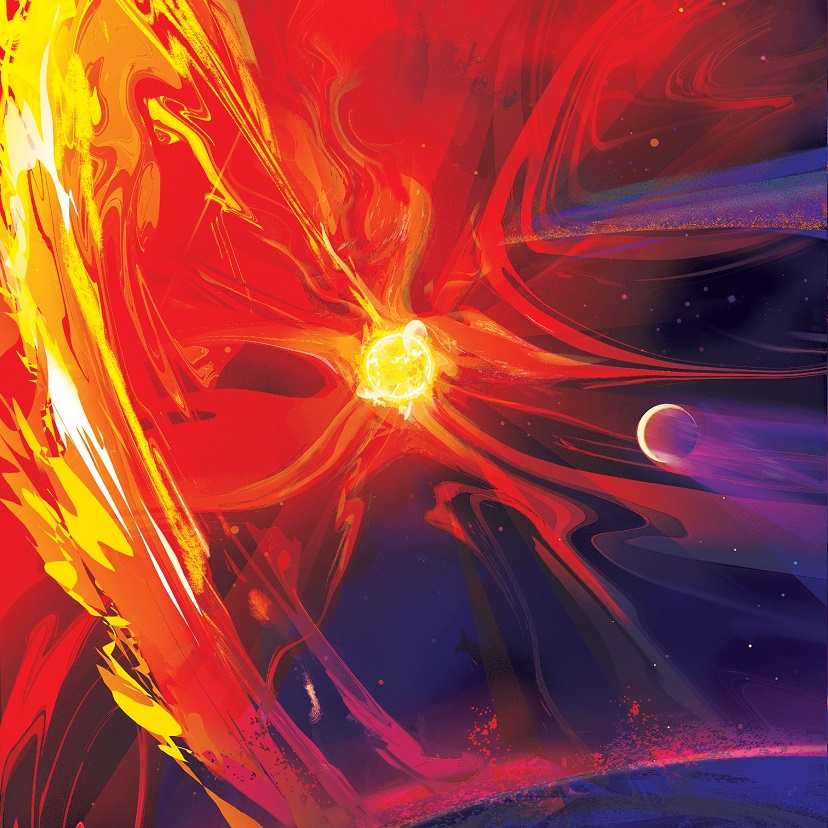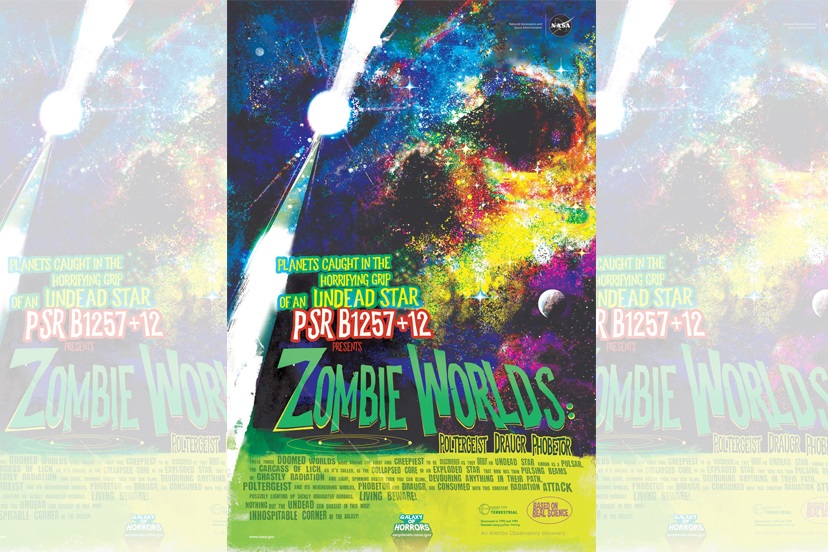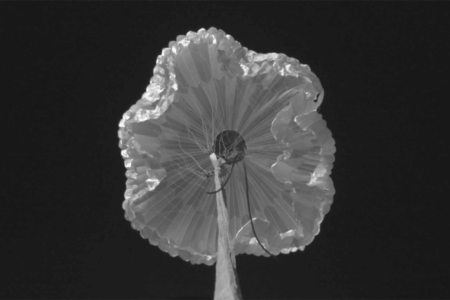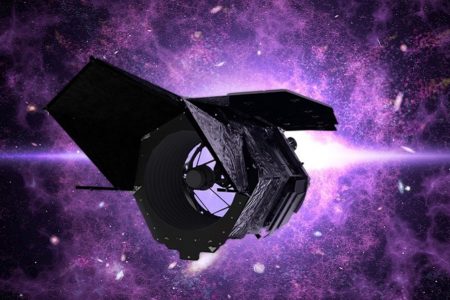
Located less than 32 light-years from Earth, AU Microscopii is among the youngest planetary systems ever observed by astronomers, and its star throws vicious temper tantrums! You’ve heard of the “terrible twos”? Well, AU Mic is in the midst of its terrible 22 … millions! This devilish young system holds planet AU Mic b captive inside a looming disk of ghostly dust and ceaselessly torments it with deadly blasts of X-rays and other radiation, thwarting any chance of life… as we know it! Beware! There is no escaping the stellar fury of this system. The monstrous flares of AU Mic will have you begging for eternal darkness. Credit: NASA-JPL/Caltech (Click on image to enlarge)
The coronavirus pandemic has proven to be one of the scariest events encountered in our lifetimes, bringing much of society to a screeching halt. Among the countless events affected by shutdowns and other restrictions, NASA Jet Propulsion Laboratory’s Theodore von Kármán Lecture Series is a particularly painful loss for devotees of the night skies.
Yet the innovative minds at JPL have found a way to soldier on, turning the popular lecture series into virtual events accessible to space buffs around the planet. Just in time for Halloween season, JPL hosts a free live talk, Galaxy of Horrors: Terrifying Real Planets, at 7 p.m. Thursday, Oct. 15. It’s accompanied by a bevy of free downloadable posters that teach planetary science using the tropes of classic horror-movie trailers and posters.
The talk will be hosted by Brian White and JPL Public Outreach Specialist Thalia Rivera. Featured speakers are JPL exoplanet scientist Dr. Tiffany Kataria, JPL astrophysicist Dr. Daniel Stern, and fellow JPL astrophysicist Dr. Jacqueline McCleary.
“Our monthly von Kármán Lecture Series has been connecting experts in their field to the public for over 25 years,” says Calla Cofield, media relations specialist for JPL. “As the leading center for robotic exploration, we have an opportunity to educate, inform and inspire the world through direct interaction. The public has the unique ability to attend talks by the astounding leaders doing the work: the engineers landing on Mars, the scientists studying water on Enceladus and teams discovering new exoplanets every day.”

These doomed worlds were among the first and creepiest to be discovered as they orbit an undead star known as a pulsar. Pulsar planets like Poltergeist and its neighboring worlds, Phobetor and Draugr, are consumed with constant radiation from the star’s core. Nothing but the undead can subsist in this most inhospitable corner of the galaxy. Credit: NASA-JPL/Caltech (Click on image to enlarge)
The lecture will focus on planets in the AU Microscopii planetary system located less than 32 light-years from Earth, one of the youngest planetary systems ever observed by astronomers at 22 million years old. Planet AU Mic b is “captive inside a looming disk of ghostly dust” and is endlessly hit with deadly blasts of X-rays and other radiation that prevent any chance of life as we know it, while emitting “monstrous” flares, according to JPL.
Also spotlighted are three “zombie worlds” that orbit an “undead” star known as a pulsar. Another topic is the far-off blue planet HD 189733 b, a gas giant exoplanet that orbits a K-type star. Its cobalt blue color comes from a “hazy, blow-torched atmosphere containing clouds laced with glass,” while howling winds send the storming glass sideways at 5,400 mph.
Other planets honored with their own posters include Kepler’s Inferno, a.k.a. Kepler-70b or KOI-55, which has an average temperature hotter than the sun’s surface at about 12,000 degrees Fahrenheit. Planet WASP-12b is having pieces stolen by a massive star in its orbit, with just 10 million years left before it is completely devoured.
Finally, TrEs-2b is known as the planet of eternal night, since it is the darkest planet ever discovered orbiting a star. Thus, anyone who would find themselves inside its atmosphere would be blinded by darkness, although some scientists believe that its molten-hot air would emit a deep red glow.








